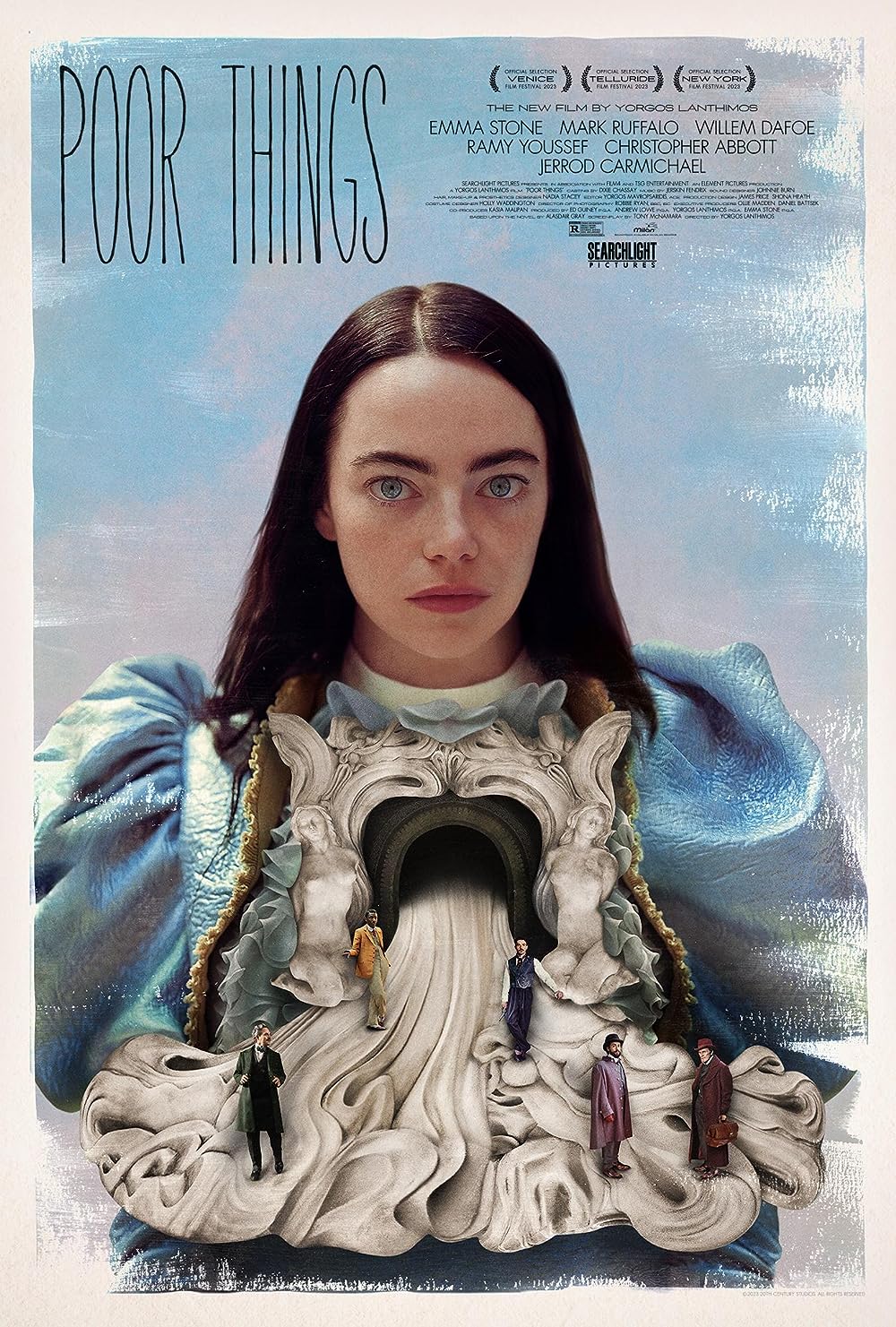Featured Image Credit: IMDb
By Blake Smith
Poor Things directed by Yorgos Lanthimos– who’s best known for directing The Lobster— hit theaters with an interesting dystopian perspective on the state and idea of womanhood and what it all means. The movie is based on the novel of the same name written by Alasdair Gray. This film is presented in a very stylistic and art-housey manner making it not for casual viewers.
The film follows Emma Stone’s character, Bella, who is a nearly brain-dead person who was brought back to life by Dr. Godwin after being found dead. The Doctor reteaches everything to her and uses her as a case study while viewing her as a daughter of sorts. She begins to grow a level of independence that gives her the desire to roam about the world to see what it’s all about.
The movie stars Emma Stone as the main lead and other notable actors like William Dafoe, Mark Ruffalo, and former RHS student Ramy Youssef. The acting all comes together to bring out the story; the style that is presented in the film is very nonconventional, which works to the movie’s benefit by weirding out the audience. They use a style of overacting to bring you into this bizarro world, most notably Mark Ruffalo comes off as so crazy towards the end that it’s as if he’s giving off a theater performance. Emma Stone continuously moves around throughout the movie like a cartoonish rendition of Frankenstein’s Monster, while William Dafoe acts as if he’s Frankenstein himself. This style makes the movie feel as if it’s an homage to the classic black-and-white era of cinema.

Credit: NPR
This film is by definition an art house movie with its use of camera work and so on. For about a third of the first half of the film, it’s completely in black and white before transitioning to color. It has a heavy use of non-conventional camera style relying on a fish-eyed lens for a good chunk of the scenes. It also has a bunch of random peephole shots where it looks as if you’re looking through who’s on the other side of a door.
The stylistic choices when it comes to the set designs give off the vibe of a Victorian manor if it was modernized to today’s standards. It was very Tim Burton-y, to say the least. The movie heavily focuses on what it means to be a woman by having the protagonist explore her sexuality, it’s not for everyone to see because the subject matter is very heavy-duty and also a bit gory with some surgical scenes of cutting open people’s heads to replace their brains. But it also features motifs of parenthood, love, and new identities/moving on. It’s a movie not everyone could handle for should be admired for the fact it steps across boundaries and is an independent film at the same time in a highly saturated market. In short, if you can handle it you should see it.
Disclaimer: You should always check movie rating guidelines to determine whether or not you would be comfortable watching it. The R-Hi does not endorse any film and watching is at the viewer’s discretion.
